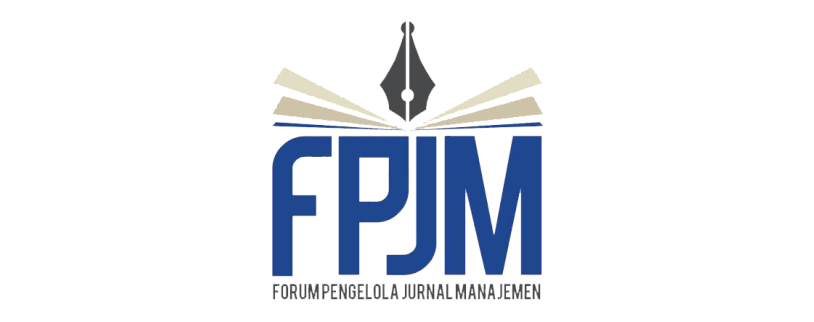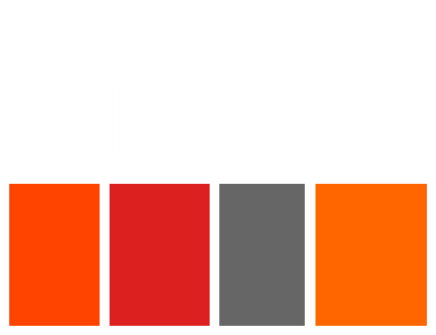Evaluating the Social and Economic Impact of Batik Industry Development in West Java: An SROI Approach
DOI:
https://doi.org/10.26905/jmdk.v13i1.15399Keywords:
Batik Industry, Cultural Heritage Preservation, Digital Transformation, Social Return on Investment (SROI)Abstract
Indonesia’s batik industry has seen fluctuating export trends, peaking at USD 744.79 million in 2022 before declining by 13.51% in 2023. To support batik artisans, Deposit Insurance Corporation is called Lembaga Penjamin Simpanan (LPS) in Indonesia and Batik Fractal launched a corporate social responsibility (CSR) initiative—an end-to-end business training program in Sukabumi and Cianjur, West Java. This study evaluates its impact using the Social Return on Investment (SROI) framework, which measures social, economic, and environmental benefits. The program improved artisans’ digital literacy with jBatik applications, enhanced design creativity, strengthened financial management, and optimized pricing strategies and social media use. The SROI ratio of 17.039 indicates that every Rp 1 invested generates Rp 17,039 in social impact, demonstrating the program’s efficiency. These findings emphasize the need for structured training, certification, and mentorship to preserve traditional batik techniques while fostering innovation. Market expansion through digital platforms, branding, and export assistance, along with financial support, can enhance industry sustainability. Furthermore, adopting technology, such as blockchain for authenticity verification and eco-friendly innovations, can modernize the sector. This study highlights the effectiveness of targeted interventions in strengthening economic resilience and safeguarding Indonesia’s cultural heritage.
Downloads
References
Amperawati, E. D., Rahmawati, Purnomo, R. A., Jaafar, N. I., Arifah, S., & Sasana, H. (2023). Measuring Batik industry resilience through economic transformation. Migration Letters, 20(8), 924–933. https://doi.org/10.59670/ml.v20i8.5629
Asmita, B., Andayani, D. R., & Rizkiningsih, P. (2020). An analysis of social investment impact of BAZNAS Microfinance Program using Social Return On Investment (SROI) method. BAZNAS Center of Strategig Studies (Puskas BAZNAS) , 6(1), 1–14.
Aurashafa, D. A., & Premananto, G. C. (2024). SROI analysis in measuring the success of the Partnership Program as a form of CSR of PT Petrokimia Gresik. Southeast Asian Business Review, 2(1), 14–27. https://doi.org/10.20473/sabr.v2i1.51575
Bellucci, M., Nitti, C., Franchi, S., Testi, E., & Bagnoli, L. (2019). Accounting for social return on investment (SROI): The costs and benefits of family-centred care by the Ronald McDonald House Charities. Social Enterprise Journal, 15(1), 46–75. https://doi.org/10.1108/SEJ-05-2018-0044
Bosch-Badia, M. T., Montllor-Serrats, J., & Tarrazon-Rodon, M. A. (2020). The capital budgeting of corporate social responsibility. Sustainability (Switzerland), 12(9), 1-28. https://doi.org/10.3390/SU12093542
Cooney, K., & Lynch-Cerullo, K. (2014). Measuring the Social Returns of Nonprofits and Social Enterprises: The Promise and Perils of the SROI. Nonprofit Policy Forum, 5(2), 367–393. https://doi.org/10.1515/npf-2014-0017
Corvo, L., Pastore, L., Mastrodascio, M., & Cepiku, D. (2022). The social return on investment model: a systematic literature review. Meditari Accountancy Research, 30(7), 49–86. https://doi.org/10.1108/MEDAR-05-2021-1307
Ihsan, A. F. (2023). Initial study of batik generation using variational autoencoder. Procedia Computer Science, 227(1), 785–794. https://doi.org/10.1016/j.procs.2023.10.584
Kementerian Perdagangan Republik Indonesia. (2023). Realisasi ekspor-impor batik Indonesia periode 2018-2023 (Januari-Maret) Pusat Data dan Sistem Informasi. 2023, 1–8.
Kim, D. J., & Ji, Y. S. (2020). The evaluation model on an application of SROI for sustainable social enterprises. Journal of Open Innovation: Technology, Market, and Complexity, 6(1), 1-15. https://doi.org/10.3390/joitmc6010007
Kusumawardani, S. D. A., Sunardi, & Kurnani, T. B. A. (2021). Assessment tool to understand the readiness of Batik SMEs for Green Industry. E3S Web of Conferences, 249(1),1-4. https://doi.org/10.1051/e3sconf/202124902008
Laing, C. M., & Moules, N. J. (2017). Social return on investment: A new approach to understanding and advocating for value in healthcare. Journal of Nursing Administration, 47(12), 623–628. https://doi.org/10.1097/NNA.0000000000000557
Lombardo, G., Mazzocchetti, A., Rapallo, I., Tayser, N., & Cincotti, S. (2019). Assessment of the economic and social impact using SROI: An application to sport companies. Sustainability (Switzerland), 11(13), 1–22. https://doi.org/10.3390/su11133612
Makanjuola, A., Lynch, M., Hartfiel, N., Cuthbert, A., Wheeler, H. T., & Edwards, R. T. (2022). A social return on investment evaluation of the pilot social prescribing emotionmind dynamic coaching programme to improve mental wellbeing and self-confidence. International Journal of Environmental Research and Public Health, 19(17). https://doi.org/10.3390/ijerph191710658
Malini, H., Arissetyadhi, I., & Rustam, Y. (2024). Analisis ROI (Return on Social Investment) Program tanggung jawab sosial lingkungan PT PLN (Persero): Upaya pemberdayaan wanita difable melalui pelatihan pembuatan batik bekerja sama dengan Rumah Batik Berkah Jambi. JIA (Jurnal Ilmiah Agribisnis) : Jurnal Agribisnis Dan Ilmu Sosial Ekonomi Pertanian, 9(1), 49–60. https://doi.org/10.37149/jia.v9i1.917
Nicholls, J., Lawlor, E., Neitzert, E., & Goodspeed, T. (2012). A guide to social return on investment U.S. Edition. January. http://www.thesroinetwork.org/publications/doc_download/241-a-guide-to-social-return-on-investment-2012
Nurjanah, I., Abdullah, A. G., & Widiaty, I. (2020). The application of “jBatik” software for batik products. IOP Conference Series: Materials Science and Engineering, 830(4), 1–7. https://doi.org/10.1088/1757-899X/830/4/042095
Prabawani, B., Hadi, S. P., Wahyudi, F. E., & Ainuddin, I. (2023). Drivers and initial pattern for corporate social innovation: From responsibility to sustainability. Heliyon, 9(6), 1-10. https://doi.org/10.1016/j.heliyon.2023.e16175
Rahmawati, D., Rahadi Aswin, R., & Damayanti Maya, S. (2018). Business valuation for small medium enterprise (Case Study: Piksel Indonesia). Kuala Lumpur International Business, Economics and Law Conference, 4(2), 9–15.
Rahmawati, D., & Rahadi, R. A. (2020). An appropriate business strategy for small medium entreprises: A case study of Piksel Indonesia. Malaysian Management Journal, 23(1), 99–114. https://doi.org/10.32890/mmj.23.2019.9687
Raya, A. B., Andiani, R., Siregar, A. P., Prasada, I. Y., Indana, F., Simbolon, T. G. Y., Kinasih, A. T., & Nugroho, A. D. (2021a). Challenges, open innovation, and engagement theory at craft smes: Evidence from Indonesian batik. Journal of Open Innovation: Technology, Market, and Complexity, 7(2), 1-24. https://doi.org/10.3390/joitmc7020121
Refki, D., Mishkin, K., Avci, B., & Abdelkarim, S. (2020). Using social return on investment to evaluate the public art exhibit Breathing Lights. Poetics, 79(1). https://doi.org/10.1016/j.poetic.2019.101401
Santoso, M. B., Raharjo, S. T., Humaedi, S., & Mulyono, H. (2020). Social Return on Investment (Sroi) Program “Sentra Industri Bukit Asam” (Siba) Dusun Batik Kujur Tanjung Enim. AdBispreneur, 5(1), 15-29. https://doi.org/10.24198/adbispreneur.v5i1.26069
Suryani, R., Budi Susilo, N., Desta, O. A., Silfiana, A., Wulansari, R., & Sila Puspita, A. (2023). A mapping outcome method using social return on investment (SROI) to assess the impacts of program: aAcase study in Setunak Island. Jurnal Presipitasi : Media Komunikasi Dan Pengembangan Teknik Lingkungan, 20(2), 378–389. https://doi.org/10.14710/presipitasi.v20i2.378-389
Syed Shaharuddin, S. I., Shamsuddin, M. S., Drahman, M. H., Hasan, Z., Mohd Asri, N. A., Nordin, A. A., & Shaffiar, N. M. (2021). A Review on the Malaysian and Indonesian batik production, challenges, and innovations in the 21st Century. SAGE Open, 11(3). https://doi.org/10.1177/21582440211040128
Weston, P. (2012). Social return on investment report Ghana. 15. https://socialvalueuk.org/wp-content/uploads/2016/03/SROI-Report_High-Resolution.pdf
Published
Issue
Section
License

This work is licensed under a Creative Commons Attribution-ShareAlike 4.0 International License.
Authors who publish with this journal agree to the following terms:
(1)Â Copyright of the published articles will be transferred to the journal as the publisher of the manuscripts. Therefore, the author confirms that the copyright has been managed by the journal.
(2) Publisher of Jurnal Penelitian is University of Merdeka Malang.
(3) The copyright follows Creative Commons Attribution–ShareAlike License (CC BY SA): This license allows to Share — copy and redistribute the material in any medium or format, Adapt — remix, transform, and build upon the material, for any purpose, even commercially.












